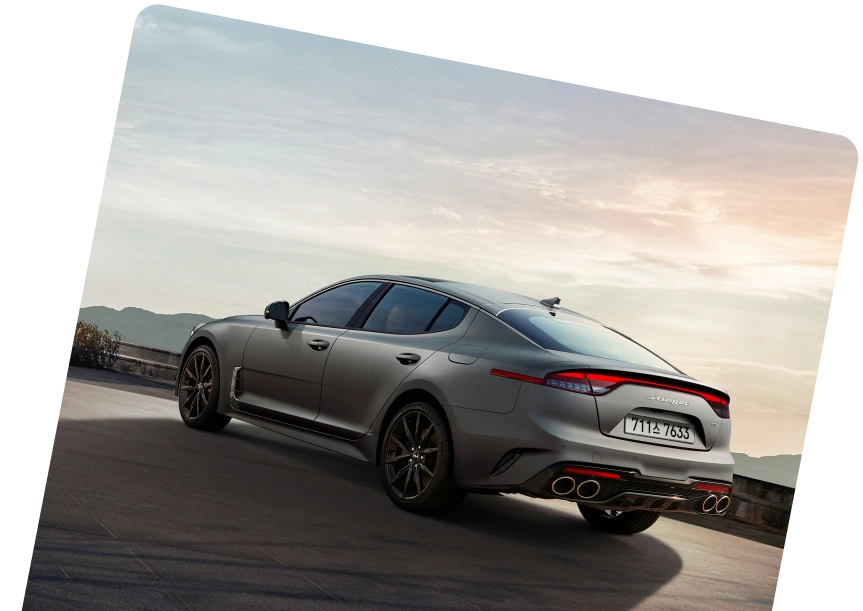
Have you or someone close to you just passed the driving test? The search for a first car is always exciting, but it can also be a real challenge. Style is often high on the list of priorities, yet the most suitable options for new drivers are those that are safe, easy to handle, and affordable. First-time drivers must consider the purchase price and running costs, alongside numerous other factors. y
The Fiat 500 regularly comes up in these conversations, but is it really a good choice for new drivers?
Find car finance deals with the best rates!
My monthly budget is
Why first-time drivers choose the Fiat 500
The Fiat 500 has become a common choice among first-time drivers, and there are good reasons why:
- Easy size for the city – As a compact vehicle, it slips into tight parking spots and handles narrow streets without stress.
- Light, responsive handling – 500s are known for being fun to drive at lower speeds, which makes them a good match for urban journeys or a first solo trip.
- Low running costs – Fuel efficiency and affordable maintenance mean drivers find it easier to manage day-to-day expenses, especially on a starter budget.
- Recognisable style – The design has a retro charm that appeals to young drivers who want a car with character.
- Insurance and tax benefits – Small engines usually keep costs down, and that’s a priority when you’re just starting out on the road.
New vs used: What to look out for
The Fiat 500 has long been known as a budget-friendly option, and that reputation carries through whether you’re considering new or used models. Buying new guarantees the latest features and a factory warranty, but the higher price doesn’t suit everyone.
A used 500 is often a better deal, especially for first-time drivers who want to keep costs low. Many older models still feel modern, provided they’ve been maintained properly. When browsing the used market, make sure to check mileage carefully. Less-used cars hold their value longer, but even higher mileage ones can serve well if they have a full service history.
If you’re comparing models across different price points or conditions, Carplus can help you understand what’s available through our lending panel, and support you in finding finance terms that work for your situation.
Total cost of ownership explained
For drivers watching every pound, the Fiat 500’s low cost is hard to beat.
Running costs: Fuel economy and day-to-day expenses
The Fiat 500 is an economical city car. The 1.2‑litre petrol engine averages 51-55 mpg, the 1.4‑litre petrol around 46-48 mpg, and the 0.9‑litre Twinair claims 70 mpg but is closer to 52 mpg in the real world. Diesel models reach 67 mpg. The 1.0‑litre mild hybrid offers 53 mpg; it isn’t electric in the plug-in sense, but it helps improve efficiency in town.
Road tax is modest: pre-2017 cars pay based on CO2, and post-2017 models have a flat £195 annual charge.
The small fuel tank and light fuel consumption keep refuelling cheap.
Insurance group and premiums for the Fiat 500
In terms of insurance costs, the 500 is an appealing option for young drivers or those new to motoring. Most standard models fall into very low insurance groups. Even the more powerful Abarth 500, while slightly higher in the groups, is affordable compared to many hot hatch alternatives.
Real-world owner experience shows that the smaller engines like the 1.2‑litre petrol or 1.0‑litre mild hybrid have the lowest insurance premiums.
Maintenance costs and servicing schedule
The Fiat 500 is economical to maintain, with routine servicing at a garage covering oil, fluids, brakes, tyres, and suspension. Replacement parts are affordable, but diesel models may need costlier repairs like DPF or engine management work.
Owners report minor issues, such as dashboard warning lights, infotainment glitches, interior rattles, and worn door seals. A visit to a mechanic can fix these cheaply. You may want to give special consideration to the Abarth 500, but this often costs more for parts and repairs due to its performance tuning.
Resale value and used car market price
Early models from 2008-2009 start at around £1,000, and a more average car in good condition costs £2,000-£3,000 for a 1.2‑litre petrol. Rarer engines like the 1.4‑litre petrol or 0.9‑litre Twinair usually go for £2,000-£5,000, with diesel models in a similar range.
Later post-2016 500s, including 1.0‑litre mild hybrids, cost £4,000-£6,000, and 2018-2020 cars sell for £6,500+. The 2021-2022 hybrids start at around £7,500.
Even after 1 year of ownership, the 500 often remains cheaper to run than many of its style-focused rivals.
Driving experience with a Fiat 500
Here’s how the 500 feels in different driving scenarios:
City driving
The Fiat 500 offers an ideal package for urban commuting thanks to its small size and light steering. Inside, drivers sit relatively high up and get excellent all-round visibility.
The 500 is easy to thread through traffic and fit into tricky parking spots. The tight turning circle and optional City button make life on the road that bit easier. The car handles really well around town, and the suspension soaks up little bumps.
Motorway driving
On the motorway, the car feels composed and confident. Motorists can accelerate onto slip roads without feeling underpowered, and the 1.0‑litre petrol engine gives enough boost to overtake slower traffic. On longer trips, it keeps a steady pace.
Euro NCAP safety ratings and first-time driver confidence
The Fiat 500 scored three out of five stars in the 2017 Euro NCAP crash tests. This is modest compared to the Toyota Aygo X or Kia Picanto, both of which achieved four stars with optional safety features. The 500’s main shortfall lies in driver assistance technology: it lacks lane-keeping assist, adaptive cruise control, and automatic emergency braking, and doesn’t come with the advanced sensors found in newer city cars.
For first-time drivers, the car is still easy to handle. Its small size, light steering, and excellent visibility make city driving and parking simple. Plus, cruise control helps on occasional motorway trips.
Fiat 500 everyday practicality
This model is simple to use on a daily basis, and here’s what makes it work.
Boot capacity and rear-seat space
Rear legroom and headroom are tight, suitable mainly for children, and only two seatbelts are fitted. Installing a child seat is possible, but it may require moving the front seat forward. Despite its compact size, the car is surprisingly practical when it comes to storage (glovebox, door bins, and cupholders).
The boot offers around 185 litres of space. Fold the rear seats down, and that capacity increases to 550 litres.
Reliability, warranty, and service history importance
The Fiat 500 has a mixed reliability record. Petrol models are generally dependable, but there are minor issues like dashboard warning lights, infotainment glitches, interior rattles, and worn door seals.
The 500 comes with a three-year/60,000-mile warranty, less than what Kia and Toyota offer.
Pre-purchase inspection and timing belt checks
If you’re looking at a used Fiat 500, take it for a proper test drive and give it a good look over. Pay attention to any unusual noises from the engine, suspension, or brakes, and see how it handles around town and on twisty roads.
For older cars, check that the timing belt has been replaced on schedule, and make sure the service history is complete.
Finance options for first-time buyers
For a first-time buyer, financing a 500 makes sense because paying outright often isn’t an option. There are a couple of ways to go about it:
- Personal Contract Purchase (PCP) – At the end of the term, you have a choice: make a larger final payment to own the car, trade it in, or simply return it. It’s flexible, but you need to be aware that the total cost over the term can be higher than if you bought the car outright.
- Hire Purchase (HP) – You pay fixed monthly amounts until the car is fully yours. Payments are usually higher than PCP, but there’s no big final payment to worry about.
Some lenders allow you to adjust the deposit and repayment terms. A larger deposit will reduce your monthly payments, but it means using more of your savings upfront.
At Carplus, we can walk you through how each option might work in your situation, helping you compare terms and get a clearer view of what fits your budget.
Comparison with other popular first cars
Let’s see how the 500 lines up with its closest rivals:
Fiat 500 vs Ford Ka
The Ford Ka offers a slightly larger interior and a practical boot, which makes it better for transporting passengers or luggage. Its ride feels more settled over rough roads, and the engines provide enough power for regular driving. The Fiat 500, however, wins in city driving thanks to its smaller size and tight turning circle.
Fiat 500 vs Volkswagen Polo
The Volkswagen Polo feels roomy inside, with a bigger boot and a steady ride when you’re out on faster roads. Its engines have enough pep for longer trips, so it works well as a practical small car. The Fiat 500, again, shines in the city.
Fiat 500 vs Mini Cooper
The Mini Cooper feels sharper on the road, with more power and a premium interior that makes driving it a bit sportier. But the 500 is more affordable and straightforward: it costs less to buy and insure while still giving a lively and practical drive. Its smaller size makes parking and navigating tight city streets much easier, something the Cooper can struggle with.
Final words
The Fiat 500 is easy to get behind the wheel of and feels easy to drive from day one. Its affordability makes it a sensible choice for a first car, and the stylish design keeps it fun to own. Compact size and light handling make it simple to navigate traffic and tight streets, so you can confidently hit the road without feeling overwhelmed. Happy motoring!








